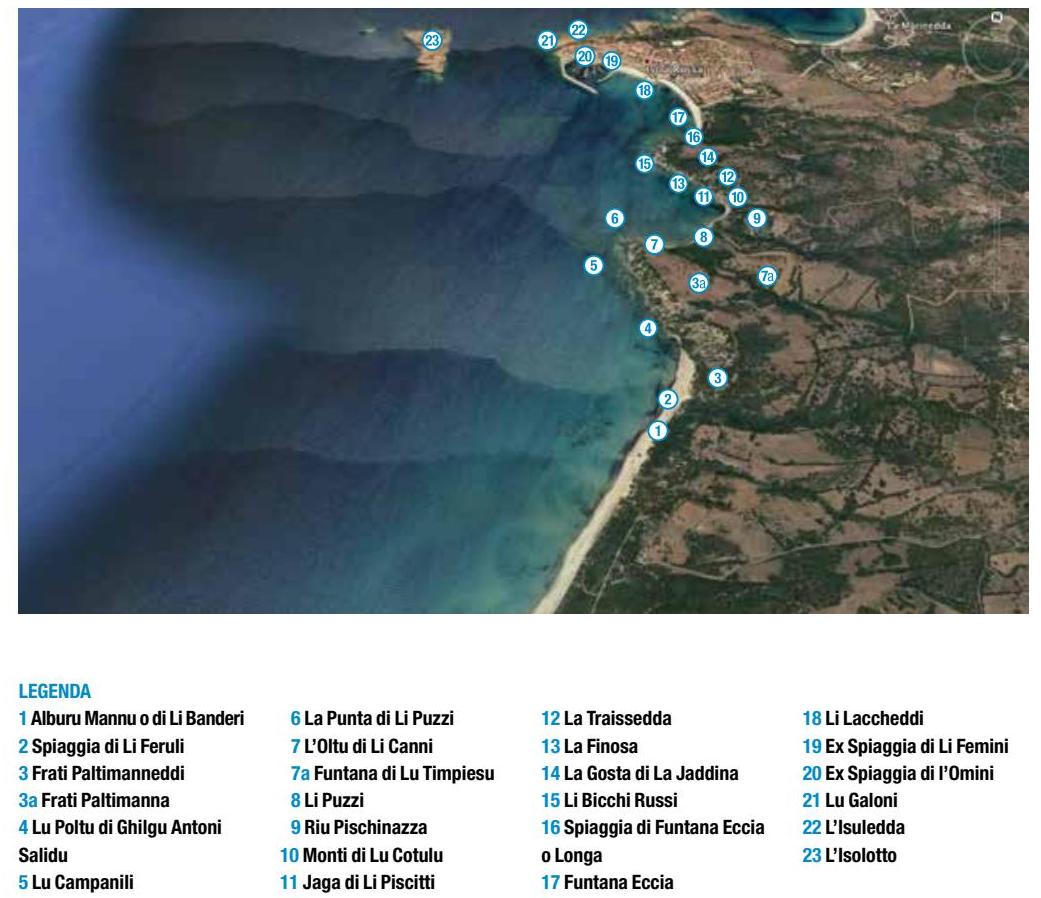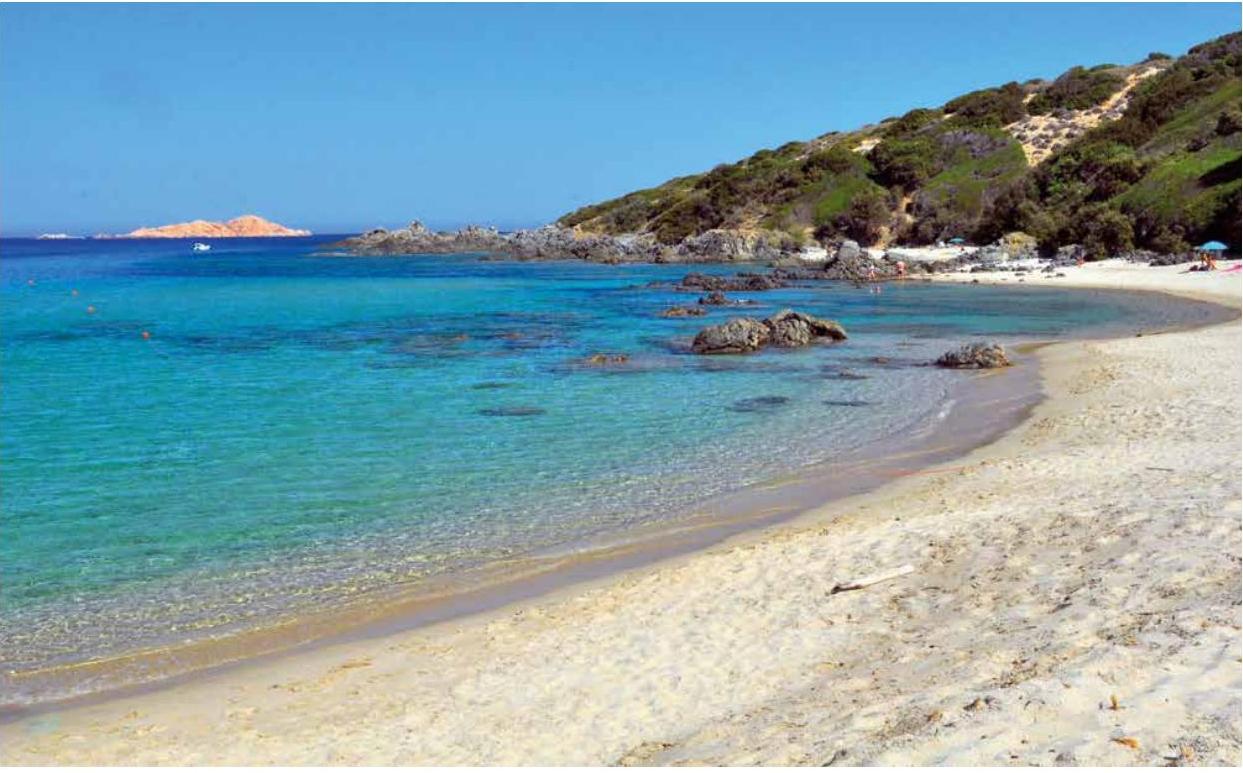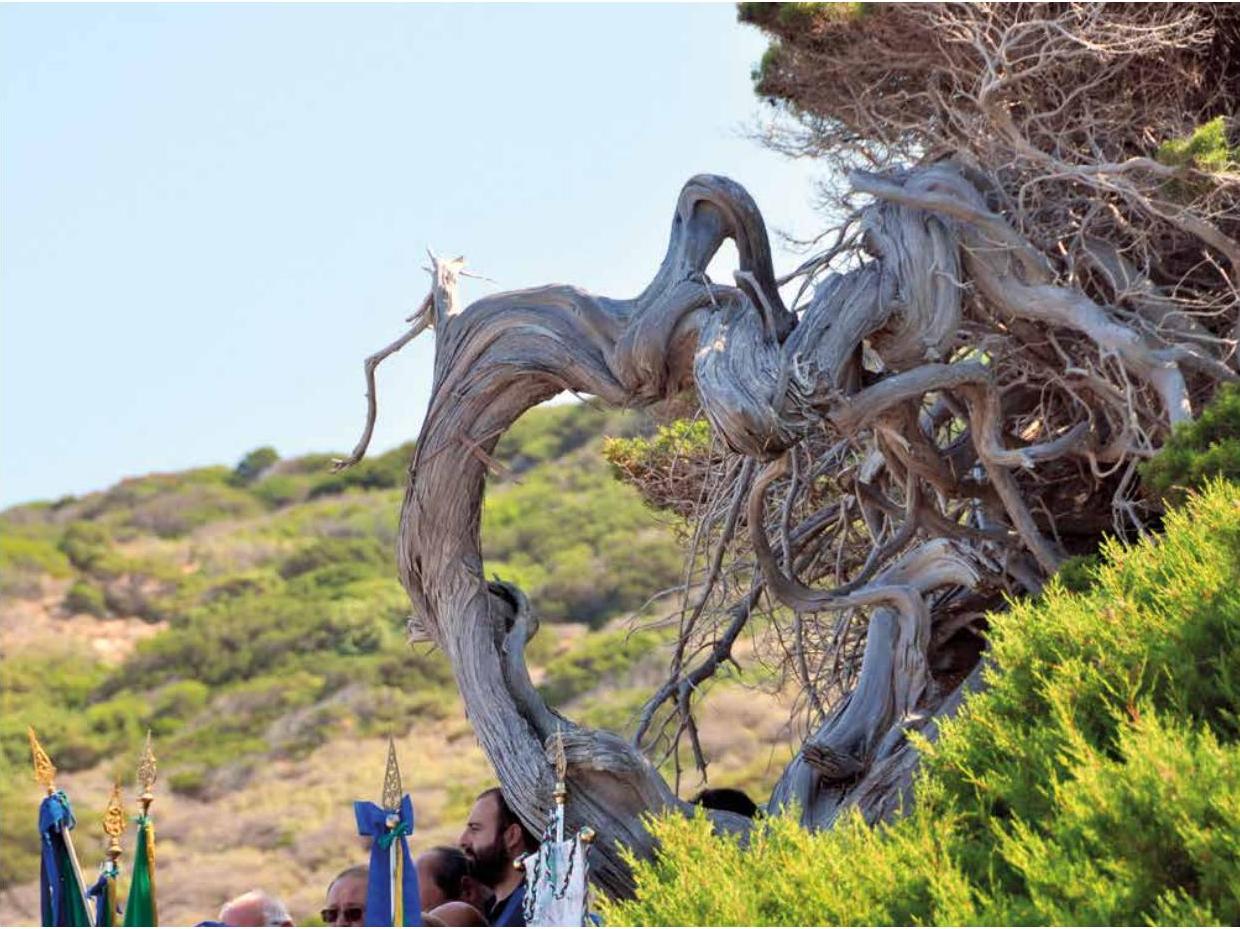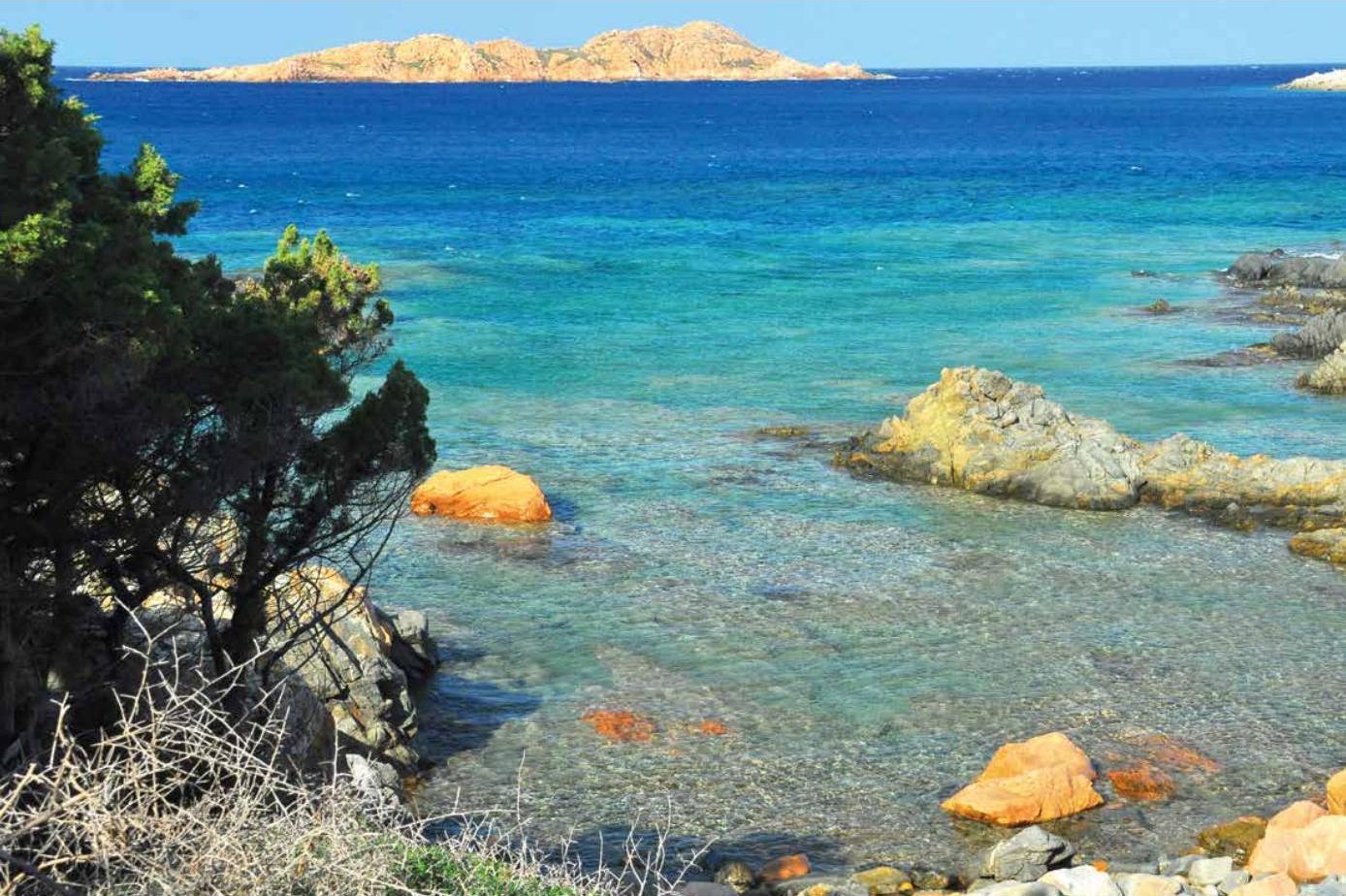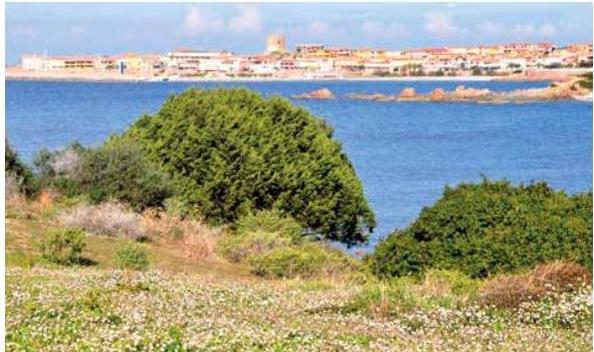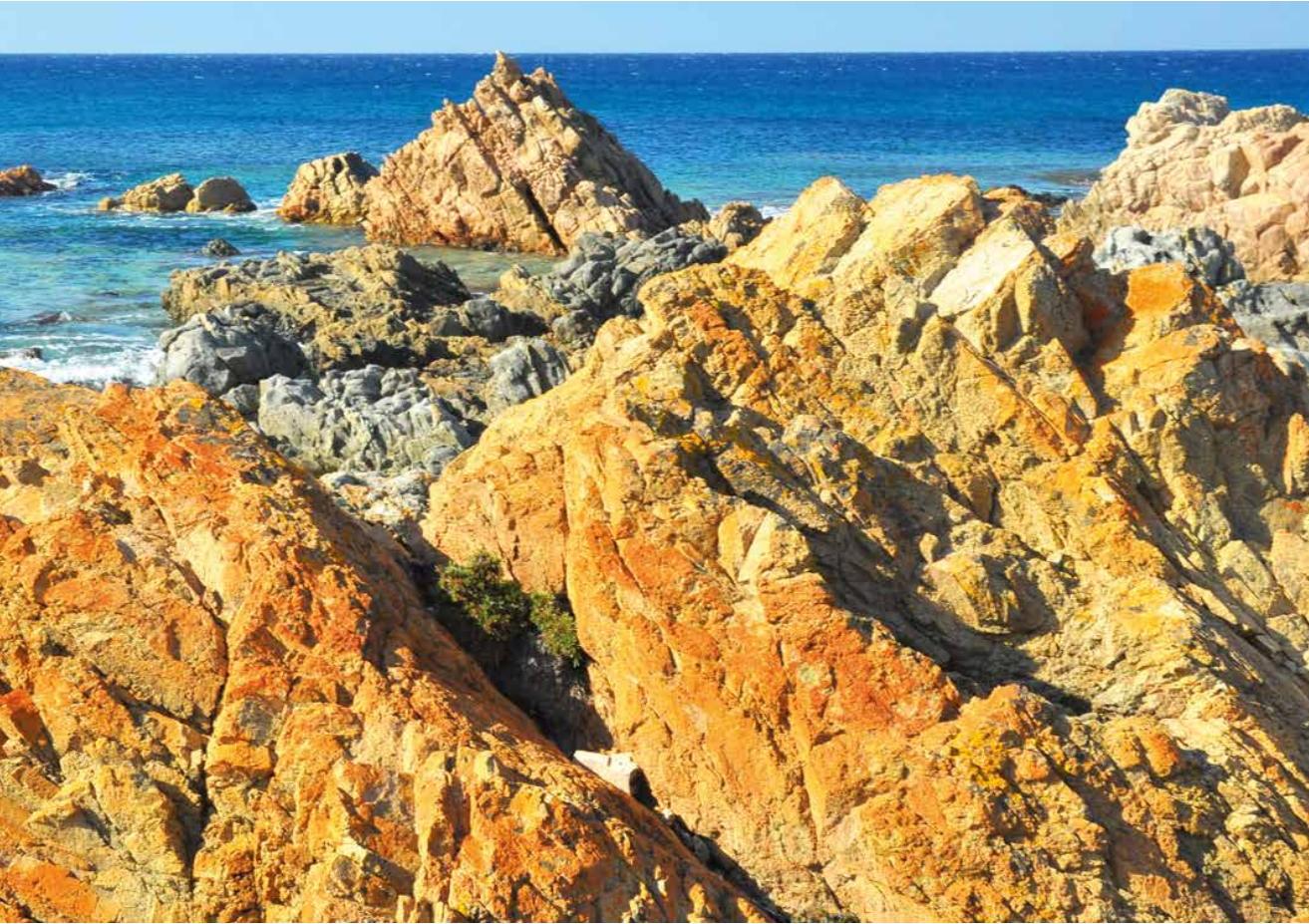TOUR BADESI – ISOLA ROSSA
by Mario Piga
extracts from the bookValledoria, Badesi, Trinità and Aglientu
SENTRIES OF THE GULF
From the Foce del Coghinas to Rio Vignola
Sassari, Carlo Delfino Editore, 2019 ⇒
courtesy of the Author
From Li Feruli to Isola Rossa
[Li Feruli]. A beach of shining sand and a clear blue sea, in periods of calm but, on the contrary, lashed by very high waves whose tops seem to foam with rage through the brackish water, during the mistral storms. Waves that deposited on the shoreline, in an almost composed and respectful manner, around thirty corpses shipwrecked after the sinking of the Tripoli, a steamer that transported soldiers and passengers during the First World War. There is an ancient juniper tree here that, before the accident, was called alburu di li feruli (Tree of the Ferula), and later, following the mournful event, was named alburu di li banderi (Tree of Flags), in reference to the flags carried by the various associations during the commemorations that took place over time and were left flying until the 1940s in memory of the sad event. […]
Walking along the cliff, you reach the headland called Punta li Puzzi (Well Point), which overlooks the pebble beach of the same name and the sandy stretch of L’Oltu di Li Canni (Reed Garden). This cove that took its name from the forest of reeds that grows there spontaneously, taking its nourishment from a fresh water spring that flows in this small creek. […]
An island of happiness surrounded by rocks and the larger beach of Li Puzzi, bordered on one side by large and slippery boulders, smoothed by the waves of the sea. This denomination also derives from the abundance of springs that almost meet, at the end of the creek, a stream called riu di Pischinazza (Marshy Place), a noun that derives from the area more upstream. […]
This is followed by the Jaga di Li Piscitti (Little Fish Gate), which highlights a point on the
cliff known to everyone as the ideal place for catching schools of lu gonnaru (mangiatutto, so called because you eat them whole). Climbing up the ridge and facing inland, you can see a hill that stands above the others, which, due to its shape, almost certainly gave its name to the next stretch of our walk: the Costa di La Jaddina (Hen Hill).
Further on, we come to a part very exposed to the mistral, called La Finosa, where the wind blows very strongly, burning the vegetation and turning it bright yellow, which I believe has given the name to this ridge, referring to straw-coloured hay, or to a place where it was once grown.
The paths follow on from one another, with the accompaniment for a good while of the intense and acrid scent of the leaves of la ghessa (Pistacia lentiscus, mastic), a plant that in folk medicine was used to heal very deep and bleeding wounds , and its berries used to make a very tasty lentisk oil (ozu di listincu) for food use. A simultaneous combination of olfactory and visual sensations that disorientates and distracts you from focusing on the landscape, which rises majestically before you.
Therefore, you have to capture all the different and evocative views with your camera, going forwards and backwards to ensure you don’t miss anything, due to both the changes in light and the continuous changes in landscape.
At a certain point, you see Li Bicchi Russi (Sharp Red Rocks), a term deriving from both the particular sharp features of this place, as well as their intense red color, from where you can spy the small fishing village on the Isola Rossa, behind which looms the Spanish tower. […]
Photos by Mario Piga

